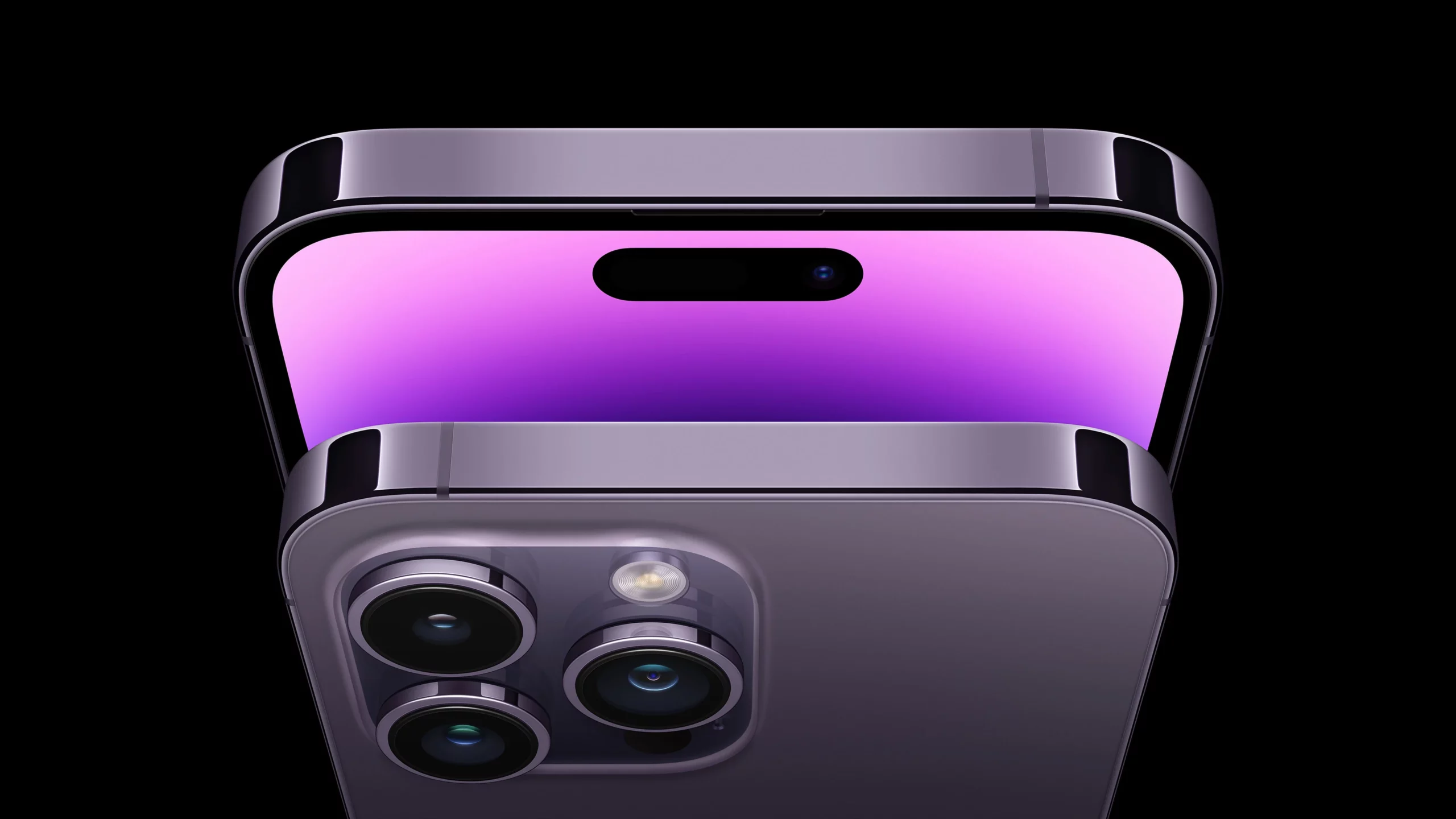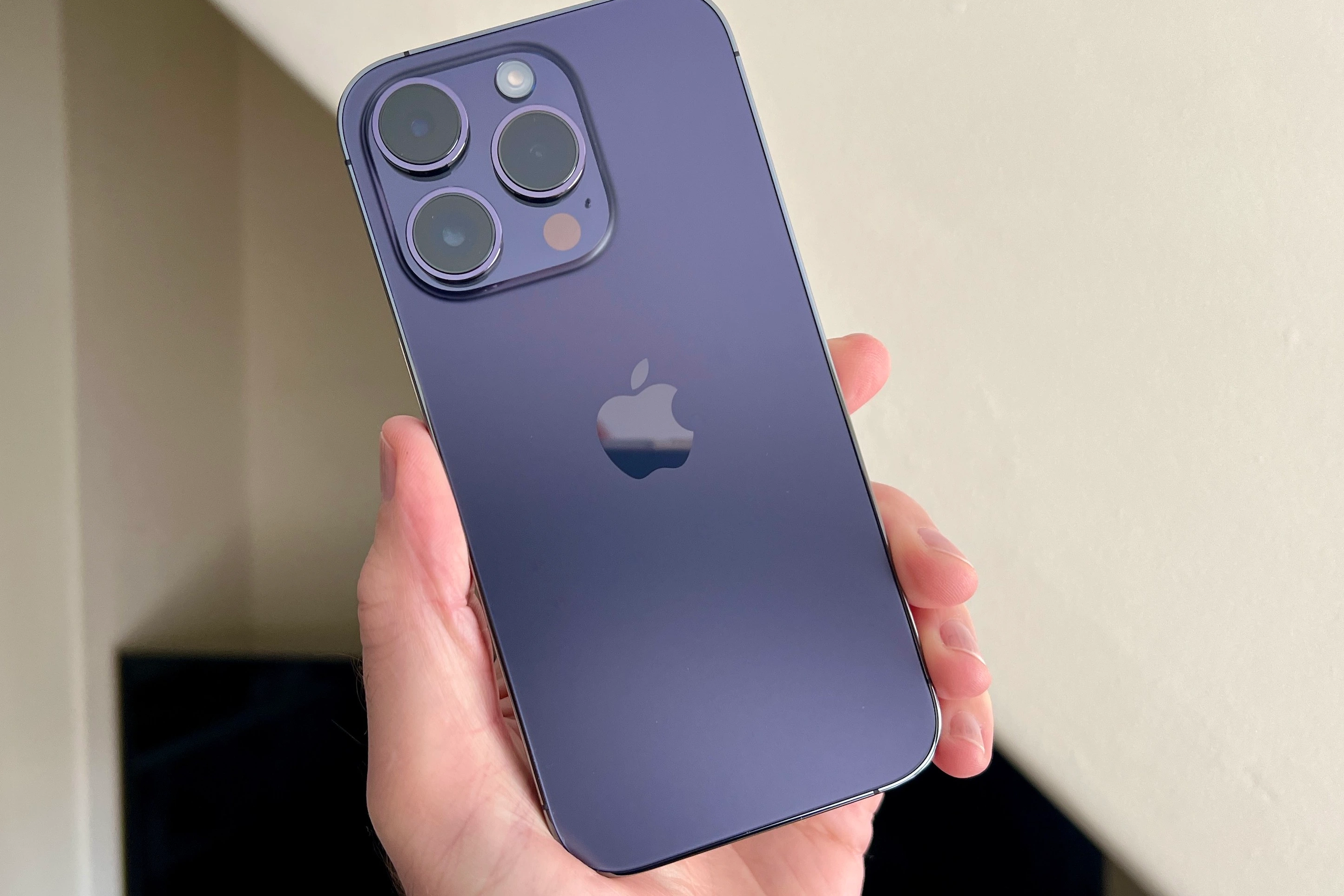Exploring iPhone Models A Detailed Guide
In the fast-paced world of technology, iPhones have stood the test of time as some of the most coveted gadgets. With each passing year, Apple unveils new and improved models packed with innovative features. If you’re a tech enthusiast or iPhone Models A Detailed Guide planning to purchase an iPhone, understanding the different iPhone models is crucial. This comprehensive guide will explore various iPhone models,
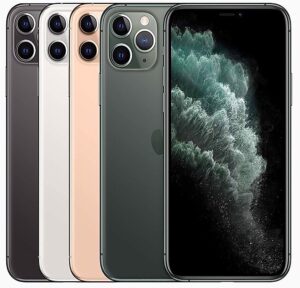
The Evolution of iPhones
1.iPhone 2G (2007)
iPhone 2G (2007) The Dawn of a Revolutionary Mobile Era
In June 2007, Apple introduced the iPhone 2G, a groundbreaking device that began a new era in mobile technology. This iconic device introduced the world to touchscreen technology and delivered a revolutionary mobile experience that iPhone Models A Detailed Guide would change how we interact with our phones forever.
Touchscreen Technology A Touch of Magic
The standout feature of the iPhone 2G was its revolutionary touchscreen technology. It replaced physical buttons and keyboards with a responsive, capacitive touch screen. This intuitive interface allowed users to navigate the device, access apps, and interact with content using their fingertips. The iPhone 2G’s touchscreen was not just a technological marvel but a paradigm shift in how we interact with our devices.
Design Excellence Sleek and Minimalist
The iPhone 2G featured a sleek and minimalist design that set it apart from other mobile phones of its time. With its slim profile, black plastic rear casing, and a 3.5-inch display, it was a device that felt both modern and premium. The absence of physical buttons on the front contributed to its clean and elegant look.
Revolutionary Mobile Experience
The iPhone 2G was more than just a phone; it was a multifunctional device that combined a phone, an iPod, and an internet communication tool. It featured a mobile Safari browser that brought the internet to the palm of your hand, making web browsing on a mobile device a practical and enjoyable experience. Users could send emails and text messages, make phone calls, and listen to music quickly and conveniently.
Camera and User Experience
While the iPhone 2G’s 2-megapixel camera may seem modest by today’s standards, it was a significant step forward at the time. It allowed users to capture photos on their phones, a concept that would become a staple feature in future smartphone generations.
Conclusion
The iPhone 2G (2007) was more than just a smartphone; it was a technological milestone that redefined how we interact with our mobile devices. It was a device that combined multiple functions into one and introduced the world to the concept of mobile apps and a user-friendly touchscreen interface.
2. iPhone 3G (2008)
iPhone 3G (2008) A Revolution in Connectivity and App Ecosystem
In July 2008, Apple unveiled the iPhone 3G, a device that improved network connectivity and brought the App Store into the spotlight, changing how we use smartphones forever. The iPhone 3G was a pivotal moment in the history of mobile technology.
Improved Network Connectivity A Leap Forward
One of the standout features of the iPhone 3G was its support for 3G (third-generation) cellular network technology. This significant upgrade offered users faster internet speeds, smoother web browsing, and improved call quality. The introduction of 3G connectivity made the iPhone 3G more versatile and capable of handling data-intensive tasks like email, web browsing, and streaming.
App Store A New Era of Mobile Apps
With the iPhone 3G, Apple introduced the App Store, a groundbreaking platform that allowed users to download and install third-party applications directly onto their devices. This innovation opened up a world of possibilities, enabling users to customize their iPhones with various apps for productivity, entertainment, communication, and more. The App Store quickly became a phenomenon, revolutionizing how we interact with smartphones and exponentially expanding the iPhone’s capabilities.
Design and Build Quality
The iPhone 3G maintained Apple’s commitment to design excellence. It featured the signature sleek and minimalist design, with a black or white plastic back and a 3.5-inch display. Despite its plastic construction, the device was comfortable to hold and had a premium feel.
iOS and User Experience
Running on iOS 2, the iPhone 3G offered an improved user experience with features like push email, GPS navigation, and support for Microsoft Exchange. It introduced a refined interface, and the introduction of the App Store made it easier than ever to find and install apps to customize your device.
Conclusion
The iPhone 3G (2008) was a transformative device in the history of smartphones. Its improved network connectivity and the App Store introduction revolutionized how we use mobile devices. It wasn’t just a phone but a gateway to a new era of mobile apps and services.
3. iPhone 4 (2010)
iPhone 4 (2010) A Design Marvel Redefining Visual Clarity
In June 2010, Apple introduced the iPhone 4, a device that redefined smartphone design and set new standards for visual clarity and video calls. The iPhone 4 was celebrated for its innovative Retina display and the introduction of a front-facing camera, which opened up new user possibilities.
Retina Display A Visual Masterpiece
The standout feature of the iPhone 4 was its Retina display. This high-resolution screen had a high pixel density that individual pixels were virtually indistinguishable from the human eye. This resulted in incredibly sharp and detailed visuals, making text, images, and videos appear as if they were printed on paper. The Retina display improved text readability and enhanced the overall visual experience, setting a new benchmark for smartphone screens.
Design Excellence A Marvel of Glass and Steel
The iPhone 4 featured a radical design departure from its predecessors. It had a glass front and back, framed by a stainless steel band. This gave the device a premium and elegant appearance and improved durability. The device’s slim profile and squared-off edges made it comfortable to hold and carry, and its design set a new standard for smartphone aesthetics.
Front-Facing Camera Pioneering Video Calls
With the iPhone 4, Apple introduced a front-facing camera, opening up a world of possibilities for video calls and self-portraits. This innovation paved the way for FaceTime, Apple’s video-calling platform, allowing users to connect with friends and family more personally and engagingly. The front-facing camera was not just a feature but a glimpse into the future of communication.
Performance and iOS 4
Under the hood, the iPhone 4 was powered by the A4 chip, which offered improved performance and energy efficiency. Paired with iOS 4, this device introduced features like multitasking, app folders, and a unified email inbox, enhancing the overall user experience.
Conclusion
The iPhone 4 (2010) was a device that embraced cutting-edge technology and redefined smartphone design and user experiences. Its Retina display set new standards for visual clarity, making everything on the screen look remarkably crisp and vibrant.
4. iPhone 5 (2012)
iPhone 5 (2012) Elevating Form and Function
In September 2012, Apple introduced the iPhone 5, which left a lasting impact on the smartphone industry. The iPhone 5 was celebrated for its taller screen and lightning-fast processor, which enhanced its form and elevated its overall functionality.
Taller Screen A Bigger Canvas
One of the standout features of the iPhone 5 was its taller screen. Apple increased the display size to 4 inches, giving users more screen real estate for a better viewing experience. This change made reading emails, browsing the web, playing games, and viewing multimedia content easier. The taller screen was not just a cosmetic improvement; it significantly improved the device’s usability.
Design Excellence Sleek and Lightweight
The design of the iPhone 5 was a departure from its predecessors. It featured a sleek aluminum and glass construction that was visually striking and remarkably lightweight. The device’s slim profile and elegant form made it comfortable to hold and carry, setting a new standard for smartphone aesthetics.
Lightning-Fast Processor Speed Redefined
Under the hood, the iPhone 5 was powered by the A6 chip, which significantly improved processing power and energy efficiency. This made tasks like app launches, web browsing, and gaming incredibly smooth and responsive. The A6 chip and iOS 6 ensured that the iPhone 5 offered a seamless and enjoyable user experience.
Camera and Performance
The iPhone 5 maintained an 8-megapixel primary camera capable of capturing detailed photos and 1080p HD videos. It also enhanced low-light performance, allowing users to take better pictures in challenging lighting conditions. Whether multitasking or running demanding apps, the device’s performance was top-notch.
Conclusion
The iPhone 5 (2012) was a device that not only embraced the desire for a larger screen but also set new standards for design and performance. Its taller screen, sleek design, and lightning-fast processor made it a game-changer in the smartphone industry.
5. iPhone 6 (2014)
iPhone 6 (2014) A Leap in Screen Size and Imaging
In September 2014, Apple introduced the iPhone 6 and 6 Plus, devices that not only marked a significant shift in design but also catered to the growing demand for larger screens and enhanced photography capabilities. The iPhone 6 series brought a bigger and better experience to multimedia enthusiasts.
Larger Screens The Age of Phablets
The most striking change with the iPhone 6 was its larger screen size. Apple departed from its traditionally smaller screens, offering two sizes: the iPhone 6 Thes. The larger screens opened up new user possibilities, making tasks like reading, gaming, and watching videos more immersive and enjoyable.
Design Excellence Slim and Sleek
The iPhone 6 and 6 Plus design was a departure from the previous models. They featured a thinner and lighter profile with rounded edges, making them visually appealing and comfortable to hold. The aluminum unibody design gave them a premium feel, reflecting Apple’s commitment to aesthetics.
Improved Cameras Capturing Life’s Moments
The iPhone 6 series introduced advancements in camera technology. The 8-megapixel primary camera was enhanced with phase-detection autofocus and improved low-light performance, allowing users to capture sharp and vibrant photos in various conditions. The larger screens also made framing shots and reviewing images a more enjoyable experience.
Performance and iOS 8
were powered by the Apple-designed A8 chip, which delivered improved performance and energy efficiency. With iOS 8, these devices offered features like Apple Pay for secure mobile payments, Health for fitness tracking, and a more robust App Store with a wide range of apps optimized for larger screens.
Conclusion
The iPhone 6 (2014) represented a significant shift in Apple’s smartphone approach. With their larger screens, slim design, and improved cameras, the iPhone 6 and 6 Plus catered to multimedia enthusiasts and those seeking a more immersive smartphone experience.
The Modern iPhone Era
6. iPhone 7 (2016)
iPhone 7 Embracing Innovation and Durability
In September 2016, Apple unveiled the iPhone 7, a device that introduced several noteworthy features and represented a significant shift in smartphone design. It introduced water resistance, making it a more durable and versatile companion for users.
The Removal of the Headphone Jack: A Bold Step
One of the most notable changes is a headphone jack. This bold move allowed Apple to make the device slimmer and more compact. To adapt, Apple included EarPods with a Lightning connector and provided a Lightning to 3.5mm adapter for users who still wanted to use their existing headphones. While controversial at the time, this decision ultimately paved the way for wireless audio solutions like AirPods and the advancement of audio technology.
Water Resistance Ready for the Elements
The iPhone 7 also introduced water resistance to the lineup. With an IP67 rating, the device could be more durable and versatile, giving users peace of mind when using it in wet conditions or accidental spills.
Design and Build Quality
Despite these significant changes, the iPhone 7 retained the sleek and premium design that Apple was known for. It featured a high-quality aluminum body, available in various colors, and a vibrant Retina HD display. The device felt premium and comfortable in the hand, making it a pleasure.
Performance and Camera
The iPhone 7 was powered by the A10 Fusion chip, which offered improved performance and energy efficiency. This made everyday tasks and gaming smoother and more responsive. While maintaining a 12-megapixel resolution, the camera system received enhancements in low-light performance and color accuracy, ensuring that users could capture memorable moments in stunning detail.
Conclusion
The iPhone 7 (2016) was pivotal in Apple’s history. It boldly embraced innovation by removing the headphone jack and introducing water resistance, setting new industry standards. Despite these changes, it maintained the high design, performance, and camera quality standards that users expected from Apple.
7. iPhone X (2017)
iPhone X (2017) Revolutionizing Smartphone Technology
In November 2017, Apple introduced the iPhone X, a device that would be remembered for its stunning design and groundbreaking technology. The iPhone X brought facial recognition technology, known as Face ID, and an edge-to-edge OLED display, reshaping the landscape of smartphone security and aesthetics.
Face ID Your Face is the Key
The standout feature of the iPhone X was Face ID, a revolutionary facial recognition system. It replaced the traditional fingerprint sensor with a sophisticated TrueDepth camera system that projected precise 3D maps. Make secure payments and access sensitive data with just a glance. Face ID was swift and remarkably convenient, setting a new standard for smartphone security.
Edge-to-Edge OLED Display A Visual Masterpiece
The iPhone X was the first to feature an edge-to-edge OLED (Organic Light-Emitting Diode) display. With minimal bezels, this stunning Super Retina display stretches from edge to edge, providing users with a more immersive viewing experience. OLED technology offered vibrant colors, true blacks, and a higher contrast ratio, making everything from photos to videos look more lifelike and captivating.
Design Excellence A Vision of the Future
The design of the iPhone X was a departure from previous models. Its stainless steel frame and glass back gave it a premium feel and enabled wireless charging. The absence of a physical home button allowed for the larger OLED display, and the device’s sleek and symmetrical form factor was a testament to Apple’s dedication to aesthetics.
Performance and Camera
Under the hood, the iPhone X was powered by the A11 Bionic chip, ensuring speedy performance and excellent energy efficiency. Its dual-camera system offered optical image stabilization for both wide and telephoto lenses, resulting in stunning photos and impressive low-light performance.
Conclusion
The iPhone X (2017) was a watershed moment in the history of smartphones. It brought futuristic facial recognition technology to the masses with Face ID, enhancing security and user convenience. The edge-to-edge OLED display redefined how we interacted with our devices and set a new standard for visual excellence.
8. iPhone 11 (2019)
iPhone 11 (2019) Redefining Smartphone Photography
In September 2019, Apple introduced the iPhone 11, a device that continued the tradition of excellence and marked a significant leap forward in smartphone photography. With its dual-camera system, Night mode, and impressive computational photography capabilities, the iPhone 11 was a game-changer for mobile photography enthusiasts.
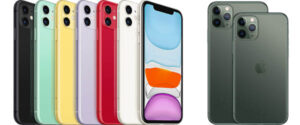
Dual-Camera System Seeing Double the Brilliance
Its dual-camera system was at the heart of the iPhone 11’s photographic prowess. This setup included a 12-megapixel primary camera and a 12-megapixel ultra-wide camera. Together, they allowed users to capture a broader perspective, making it easier to fit more of the scene into a single shot. Whether you were taking breathtaking landscapes or tight indoor pictures, the iPhone 11’s dual-camera system ensured exceptional image quality and sharpness.
Night Mode Illuminating the Darkness
The introduction of Night mode was a standout feature of the iPhone 11. This groundbreaking technology is automatically activated in low-light conditions, allowing users to capture stunning photos even in the darkest environments. Night mode utilized advanced algorithms to combine multiple images, reducing noise and enhancing detail. The result? Crisp, well-exposed, and natural-looking photos, even in challenging lighting situations.
Computational Photography The Magic Behind the Lens
The iPhone 11 was a prime example of how computational photography had become a driving force in smartphone cameras. Its A13 Bionic chip and innovative software-enabled features like Smart HDR intelligently adjust highlights and shadows for optimal exposure. Additionally, Deep Fusion technology analyzed and combined multiple image frames to deliver unprecedented detail and clarity in photos.
Video Capabilities A Filmmaker’s Dream
The iPhone 11 didn’t stop at revolutionizing photography; it also elevated mobile videography. Users could shoot 4K videos at 60 frames per second, delivering cinematic quality. The iPhone 11 was the perfect tool for capturing life’s moments in stunning clarity and fluidity.
Design and Display
The iPhone 11 maintained Apple’s signature sleek design and featured a 6.1-inch Liquid Retina display. This display offered vibrant colors and sharp visuals, making it ideal for both photography and multimedia consumption.
Conclusion
The iPhone 11 (2019) was a landmark device that redefined the possibilities of smartphone photography. Its dual-camera system, Night mode, and computational photography capabilities allowed users to capture breathtaking images in various conditions. Whether you were an amateur photographer or a seasoned pro, the iPhone 11 made it easier to take stunning photos and videos on the go.
9. iPhone 12 (2020)
iPhone 12 (2020) A Leap Forward in Innovation
In October 2020, Apple introduced the iPhone 12 lineup, and it was nothing short of a technological marvel. This series not only embraced the much-anticipated 5G technology but also brought a range of exciting enhancements to the table, including a sleeker design, MagSafe technology, and the powerful A14 Bionic chipset.
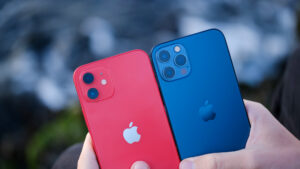
5G Connectivity The Next Generation of Mobile
The hallmark feature of the iPhone 12 lineup was its support for 5G connectivity. This leap in mobile technology promised lightning-fast. Whether streaming high-definition content, engaging in video calls, or gaming on the go, the iPhone 12 ensured that your online experiences were smoother and more responsive than ever.
Sleeker Design Form Meets Function
Apple’s design philosophy has always emphasized elegance and simplicity, and the iPhone 12 exemplifies this ethos. The series introduced a sleeker, flat-edge design reminiscent of the beloved iPhone 4. The Ceramic Shield front cover offered improved durability, making it more resilient to drops and accidents. The iPhone 12 felt great in the hand, and its refined design was a testament to Apple’s commitment to form and function.
MagSafe Technology A Magnetic Revolution
With the iPhone 12, Apple reintroduced MagSafe technology, which allowed for easy attachment of compatible accessories through a ring of magnets on the back of the device. This innovation opened up a world of possibilities, from snap-on cases and wallets to wireless chargers. MagSafe ensured that your iPhone 12 experience was convenient and highly customizable to suit your lifestyle.
A14 Bionic Chipset Power and Efficiency
Under the hood, the iPhone 12 series was powered by the A14 Bionic chipset. This cutting-edge processor provided exceptional performance for tasks like gaming and content creation and optimized power efficiency. This meant longer battery life while still delivering blazing-fast speeds and smooth multitasking.
Camera and Display
The iPhone 12 continued to impress in the camera department, with its dual-lens system capable of capturing stunning photos and videos in various conditions. The Super Retina XDR display delivered vibrant colors and sharp details, making it ideal for enjoying multimedia content.
Final word
The iPhone 12 (2020) lineup was a testament to Apple’s commitment to innovation and user experience. With its support for 5G, sleek design, MagSafe technology, and the powerful A14 Bionic chipset, it kept up with the ever-evolving smartphone landscape and set new standards.
The Latest iPhone Models
10. iPhone 13 (2021)
iPhone 13 (2021) Elevating Your Smartphone Experience
In September 2021, Apple unveiled its much-anticipated iPhone 13 series, comprising four distinct models. This latest iteration of the iPhone continues to redefine what a smartphone can achieve, with notable improvements across the board.

Camera Capabilities A New Era in Photography
One of the standout features of the iPhone 13 series is its remarkable camera system. Apple has once again upped its game, providing users an even more immersive photography experience. With advancements like sensor-shift optical image stabilization and improved low-light performance, capturing stunning photos and videos has never been easier. The iPhone 13 is the perfect companion for shutterbugs, preserving your memories in unparalleled detail and clarity.
Promotion Displays Silky Smooth Interaction
A notable addition to the iPhone 13 series is the introduction of ProMotion displays. This technology allows for adaptive refresh rates, meaning the screen refreshes as quickly as 120 user experience. Whether scrolling through your social media feed or playing graphics-intensive games, the ProMotion display ensures everything feels buttery soft. It’s a game-changer for those who value fluidity and responsiveness in their smartphone interactions.
5G Connectivity Fast and Future-Proof
The iPhone 13 series maintains its support for 5G connectivity, ensuring you’re ready for the future of mobile communication. Whether streaming high-definition content, engaging in video calls, or downloading large files, 5G on the iPhone 13 keeps you connected at lightning speed.
Design and Build Aesthetic Excellence
Apple has always been synonymous with sleek and premium design, and the iPhone 13 is no exception. The models feature Ceramic Shield front covers, which are more challenging than ever, offering enhanced durability and drop protection. The array of available colors and finishes allows you to choose a device that performs exceptionally and reflects your style.
Performance Powered by A15 Bionic
Under the hood, the iPhone 13 series is powered by the A15 Bionic chip. This chipset is more powerful and energy-efficient, ensuring that your device can handle demanding tasks while preserving battery life. Whether you’re gaming, editing videos, or multitasking, the iPhone 13 delivers outstanding performance without compromise.
Final Word
The iPhone 13 (2021) series builds upon the legacy of its predecessors, offering an even more refined and feature-rich smartphone experience. With improvements in camera capabilities, the introduction of ProMotion displays, and continued support for 5G connectivity, Apple has once again raised the bar for what a smartphone can achieve.
11. iPhone SE (2022)
iPhone SE (2022) Bridging Affordability and Performance
In the ever-evolving world of smartphones, Apple has consistently set the bar high with its innovative devices. While the latest iPhone models often steal the spotlight, Apple still remembers budget-conscious consumers. The iPhone SE, which debuted in 2022, is a testament to this commitment, offering a remarkable blend of affordability and performance.
A15 Bionic Chip Power at Its Core
One of the standout features of the iPhone SE is its engine – the A15 Bionic chip. This powerhouse chipset, also found in the flagship iPhone models, ensures that the iPhone SE performs flawlessly. Whether you’re multitasking, gaming, or running demanding applications, the A15 chip easily handles it. This means smoother app launches, quicker photo editing, and faster overall device responsiveness.
5G Connectivity Stay Connected at Lightning Speeds
In today’s fast-paced world, staying connected is more critical than ever. The iPhone SE doesn’t compromise in this department either. It has 5G connectivity, ensuring access to lightning-fast internet speeds, smoother video streaming, and quicker downloads. With 5G, you can enjoy seamless communication and connectivity wherever you are.
Affordability without Compromise
What truly sets the iPhone SE apart is its affordability. Apple understands that only some people look for the latest bells and whistles. Some users want a reliable smartphone experience without breaking the bank. With the iPhone SE, you get just that – a device that offers top-notch performance and features at a price point that won’t leave your wallet empty.
Camera Capabilities
While the iPhone SE doesn’t boast the extensive camera setup of its pricier counterparts, it still delivers impressive photography. Its single-lens camera captures detailed and vibrant photos in various lighting conditions. Whether taking scenic landscapes or snapping quick selfies, the iPhone SE ensures your memories are preserved in high quality.
Design and Display
The iPhone SE maintains a classic design reminiscent of earlier iPhone models. Its compact form factor makes it easy to handle with one hand. The 4.7-inch Retina HD display provides crisp visuals and accurate colors, ideal for browsing, gaming, and content consumption.
Final word
The iPhone SE (2022) stands out as a beacon of affordability and performance in a market saturated with high-end, high-priced smartphones. It offers the core Apple experience, featuring the A15 Bionic chip, 5G connectivity, and a reliable camera, all at a price point that caters to budget-conscious consumers. You’re looking for an iPhone that perfectly balances performance and affordability. In the ever-evolving world of technology, iPhones have consistently pushed boundaries and set new standards. Each model has unique selling points, catering to a diverse audience with varying preferences and budgets. As you embark on your iPhone journey, carefully consider your needs and budget to find the perfect model.
FAQS
What Are the Different iPhone Models?
Apple has various iPhone models catering to multiple needs and budgets. There’s something for everyone, from the compact iPhone SE to the high-end iPhone Pro Max. Each model offers distinct features and specifications, requirements.
How Often Does Apple Release New iPhone Models?
Apple typically releases new iPhone models once a year. iPhone Models A Detailed Guide This annual release schedule creates anticipation among tech enthusiasts eagerly awaiting each iteration’s latest innovations and improvements.
What Are the Key Features of the Latest iPhone Models?
The latest iPhone models always come packed with cutting-edge features. These may include improvements in camera technology, display quality,iPhone Models A Detailed Guide processing power, and software enhancements. Apple consistently strives to set new standards in the smartphone industry.
How Does iPhone Pricing Work?
iPhone pricing varies depending on the model and its specifications. Higher-end models with more storage and advanced features tend to be more expensive. Apple also offers financing options and trade-in programs, making upgrading to the latest model easier.
Which iPhone Model Is Right for Me?
Choosing the suitable iPhone model depends on your individual preferences and needs. Factors to consider include budget, camera requirements, iPhone Models A Detailed Guide display size, and the need for additional features like 5G connectivity or enhanced battery life.
What Are the Camera Capabilities of the Latest iPhones?
Apple’s dedication to photography is evident in the camera capabilities of their iPhones. The latest models often feature multiple lenses, iPhone Models A Detailed Guide advanced image processing, and innovative shooting modes, making them ideal for amateur photographers and professionals.
Do iPhones Support 5G Connectivity?
Yes, many recent iPhone models support 5G connectivity. This enables faster download and upload speeds, reduced latency, and improved overall network performance. It’s a significant advancement for those who rely on their iPhones for work or entertainment.
What Is the Battery Life Like on iPhone Models?
Battery life varies across iPhone models. Apple continually works on optimizing battery performance. Still, it’s essential to consider iPhone Models A Detailed Guide your usage habits and, if necessary, invest in portable chargers or power banks for longer days.
How Does iOS Impact iPhone Performance?
iOS, Apple’s operating system, plays a crucial role in iPhone performance. With each new iOS version, users can expect performance improvements, new features, and enhanced security.
What Are the Security Features of iPhones?
Security is a top priority for Apple. iPhones have robust security features, including Face ID, Touch ID, and regular software updates to iPhone Models A Detailed Guide patch vulnerabilities and protect user data.
Can I Customize My iPhone?
While iPhones have a consistent and user-friendly interface, you can still personalize your device with custom wallpapers, widgets, and app arrangements. The App Store also offers many apps to enhance your iPhone experience.
How Does Apple’s Ecosystem Enhance iPhone Experience?
Apple’s ecosystem seamlessly integrates iPhones with other devices like MacBooks, iPads, and Apple Watches. This synergy allows for effortless iPhone Models A Detailed Guide data sharing, task continuity, and a unified user experience.
Are iPhones Environmentally Friendly?
Apple is committed to reducing its environmental Phone Models A Detailed Guide footprint. iPhones are designed with recyclability in mind, and the company has ambitious goals to minimize its environmental impact.
What Are the Common iPhone Issues and How to Troubleshoot Them?
IPhones may encounter common issues like battery drain, app crashes, or connectivity problems like any electronic device. Fortunately, troubleshooting steps and online resources are available to help resolve these issues.
What’s Next for iPhone Innovation?
technology. While we can’t predict the future, iPhone Models A Detailed Guide you can expect ongoing innovation, with new features and capabilities that will continue to amaze and improve the lives of iPhone users.
Can I use the same accessories for different iPhone models?
Yes, many accessories like chargers and headphones are compatible with various iPhone models. However, it’s essential to check for compatibility iPhone Models A Detailed Guide with your specific model.
How do I transfer data from my old iPhone to a new one?
Apple offers a simple “Quick Start” process to transfer data between iPhones. You can also use iCloud or iTunes for more control over the transfer.
Are iPhones water-resistant?
Many recent iPhone models are water-resistant, but the resistance level may vary. Check the specific model’s IP rating for details.
Can I downgrade iOS if I don’t like the latest version?
Apple typically allows downgrades shortly after a new iOS release, but this window is limited. Make sure to back up your data before attempting a downgrade.
Is it worth investing in an extended warranty for my iPhone?
The decision to purchase an extended warranty depends on your risk tolerance. AppleCare+ offers added peace of mind, but weighing the cost against potential repair expenses is essential.

